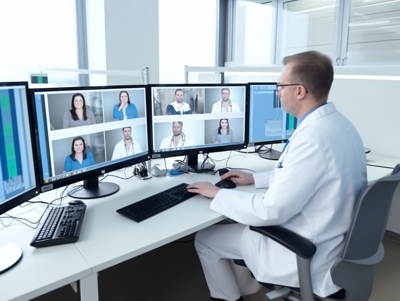Telemedicine
Telemedicine is the delivery of healthcare services between a provider and a patient who are physically distant from each other at the time of the service. While regarded as a "novelty" feature of the future only a few years ago, following the COVID-19 pandemic telemedicine services became essential for every practice. Truly, the entire healthcare industry realized the need for restructuring and modernizing its technologies, to facilitate remote services and give the patient more control and flexibility over their health and personal scheduling. Telemedicine has grown in popularity over the past few years because it offers near-instant, easy access to clinical and non-clinical healthcare services. And, insurance companies are treating these visits like they would an in-person visit at the provider’s office. Telemedicine also allows for appointments to go faster and can increase the overall number of patient appointments a doctor can manage significantly. Anyone who needs healthcare services and prefers to stay at home or can’t leave their home should consider telehealth services to get essential care.
Telehealth services include:

Telemedicine aims to meet the needs of today’s healthcare consumers, which of course, is everyone. We believe it has the capacity to revolutionize the delivery of healthcare, by at once significantly improving the quality of care, increasing accessibility and efficiency through reducing the need to travel, providing clinical support, overcoming geographic barriers, offering various types of communication devices, and improving patient outcomes. Thus, given the current focus on efforts to contain costs, improve the delivery of care to all segments of the population, and meet consumer demand, telemedicine is an attractive prospective tool for success in these areas.
If you are interested in what telemedicine can do for your practice, please feel free to reach out! We would love to help.

